
Collomix offers a complete range of tools for the production of high-quality masonry using the thin-bed method.
Inhaltsverzeichnis
Whether the masonry is made of plane bricks, sand-lime bricks or aerated concrete, the masonry in modern solid houses is now built using the thin-bed method. In comparison to the classic standard mortar method, which uses brick trowels and has a one centimeter thick layer of mortar between the bricks, the thin-bed method only applies a thin layer of adhesive mortar of up to approx. three mm between the rows of bricks, which is even thicker in the case of hollow bricks. Nowadays, this type of masonry construction is made possible by dimensionally accurate brick formats.
The advantages are enormous: significant savings in the amount of mortar, a dense masonry with high thermal insulation by preventing cold bridges and faster processing due to the dimensionally accurate bricks, plus higher masonry load, low shrinkage behavior and deformation of the mortar joint. The result is a clean and homogeneous masonry with a short drying time. However, there is one thing to bear in mind: the first row of bricks, the so-called edge layer, which is placed in a mortar bed, must be absolutely plumb and level.
Collomix offers the most important tools for creating high-quality masonry using the thin-bed or adhesive method as part of its masonry range:
- The laying aid with levelling gauges for quick laying of the edge layer (1st row of stones)
The AQiX water metering device for the right amount of water for mixing mortar
Proven mixing technology (manual mixers from the Xo series, automatic mixers from the Collomatic series, DLX mixer) for honey-like, lump-free thin-bed mortar
Mortar rollers with application rollers for bricks, sand-lime bricks or aerated concrete for quick and clean mortar application
Was ist das Dünnbettverfahren?
Ob es sich um Mauerwerk aus Planziegel, Kalksandstein oder Porenbeton handelt - bei modernen Massivhäusern wird das Mauerwerk heute im Dünnbettverfahren erstellt. Im Vergleich zum klassischen und mit Maurerkellen gemauerten Normalmörtelverfahren mit ihrer ein Zentimeter dicken Mörtelschicht zwischen den Steinen wird im Dünnbettverfahren nur noch eine dünne und bei Hohlziegeln sogar deckelnde Klebemörtelschicht von bis ca. drei mm zwischen den Steinreihen aufgetragen. Diese Ausführung des Mauerwerksbaus ermöglichen heutzutage die maßgenauen Steinformate.
Warum wendet man häufig das Dünnbettverfahren an?
Die Vorteile sind enorm: deutliche Einsparung bei der Mörtelmenge, ein dichtes Mauerwerk mit hoher Wärmedämmung durch Verhinderung von Kältebrücken und schnellere Verarbeitung durch die maßgenauen Steine, dazu eine höhere Mauerwerksbelastung, geringes Schwindverhalten und Verformung der Mörtelfuge. Das Ergebnis ist ein sauberes und homogenes Mauerwerk mit kurzer Trocknungszeit. Eines gilt es dabei aber zu beachten: die erste Steinreihe, die sog. Kimmschicht, die in ein Mörtelbett gesetzt wird, muss absolut lot- und waagrecht sitzen.
Für die Erstellung eines hochwertigen Mauerwerks im Dünnbett- oder Klebeverfahren bietet Collomix die wichtigsten Werkzeuge als Mauerwerksprogramm an:
- Die Anlegehilfe mit Nivellierlehren für das schnelle Anlegen der Kimmschicht (1. Steinreihe)
- Das Wasserdosiergerät AQiX für die richtige dosierte Wassermenge zur Mörtelmischung
- Bewährte Mischtechnik (Handrührgeräte der Xo-Serie, Automatikmischer der Collomatic-Serie, DLX-Rührer) für honigartigen, klumpenfreien Dünnbettmörtel
- Mörtelrollen mit Auftragswalzen, für Ziegel, Kalksandstein oder Porenbeton zum, schnellen und sauberen Mörtelauftrag
Was ist beim Mischen von Dünnbettkleber zu berücksichtigen?
Die richtige Mischtechnik ist der nächste Faktor. Während der Dünnbettmörtel für Planziegel in seiner Viskosität eher dickfließend ist, muss der Klebemörtel für Kalksandstein auf Grund anderer Bestandteile eher eine weichplastische Konsistenz aufweisen. Für alle Kleber ist aber entscheidend, dass das fertige Gemisch geschmeidig und komplett frei von Klumpen ist. Nur so ist eine professionelle Verarbeitung gewährleistet. Denn Klumpen im Mischgut erzeugen partielle Verstopfungen und damit Probleme beim Auftragen mit der Mörtelrolle. Für das hochwertige Anmischen des Klebers bietet Collomix je nach Art des Bauvorhabens eine große Auswahl von Rührgeräten mit speziellem Rührstab für den Kleber (Typ DLX) an. Die bewährten Handrührgeräte der Xo-R-Serie umfassen Ein- oder Zweigangmaschinen für den universellen Einsatz sowie ein Modell Akku-Rührwerk, auf Basis der herstellerübergreifenden CAS-Akkutechnologie, für den kabellosen Einsatz auf der Baustelle. Für das Mischen mit Handrührgeräten empfiehlt Collomix den speziell für die Kleberaufbereitung entwickelten Rührer vom Typ DLX. Damit ist eine klumpenfreie Mischung gewährleistet. Für größere Bauvorhaben und Klebermengen findet der automatische Mischer vom Typ AOX mit dem DLX-Mischwerkzeug auf vielen Baustellen Verwendung.

DLX-Rührer für perfekte, klumpenfreie Mischung
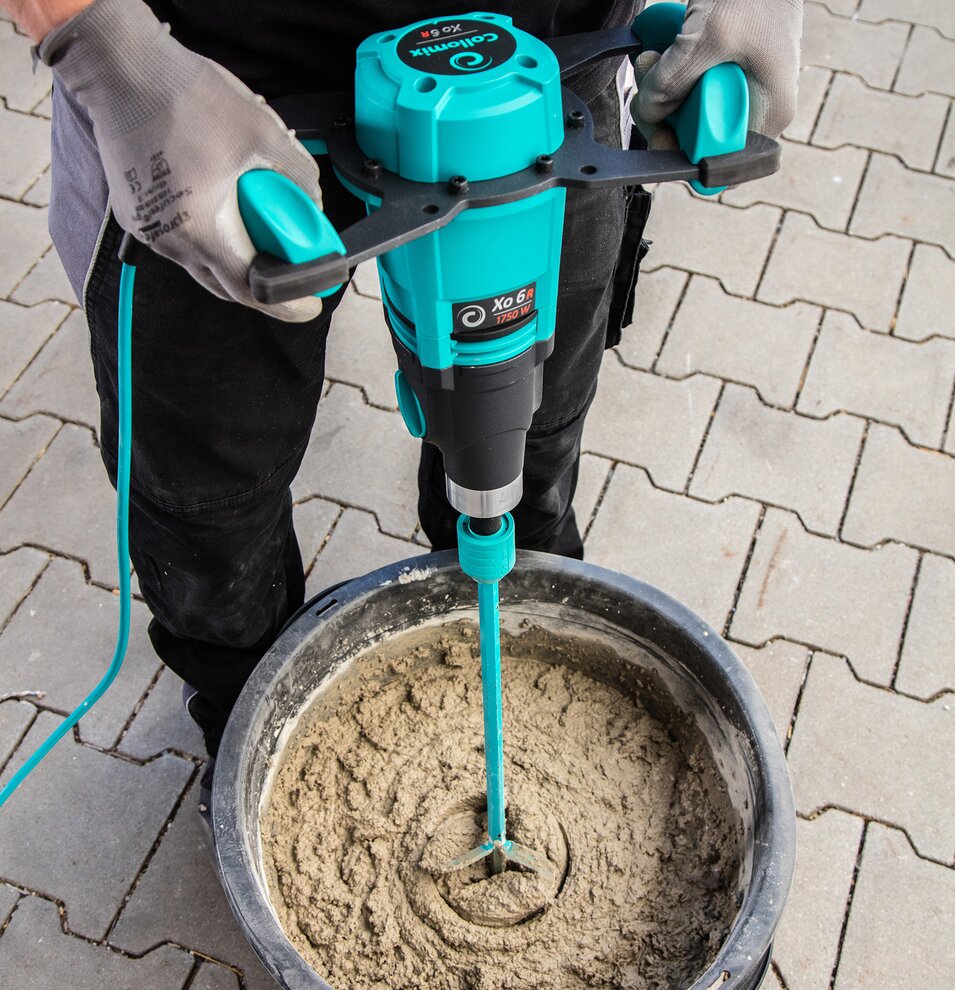
Starker Antrieb und Rührer WK für Vormauermörtel
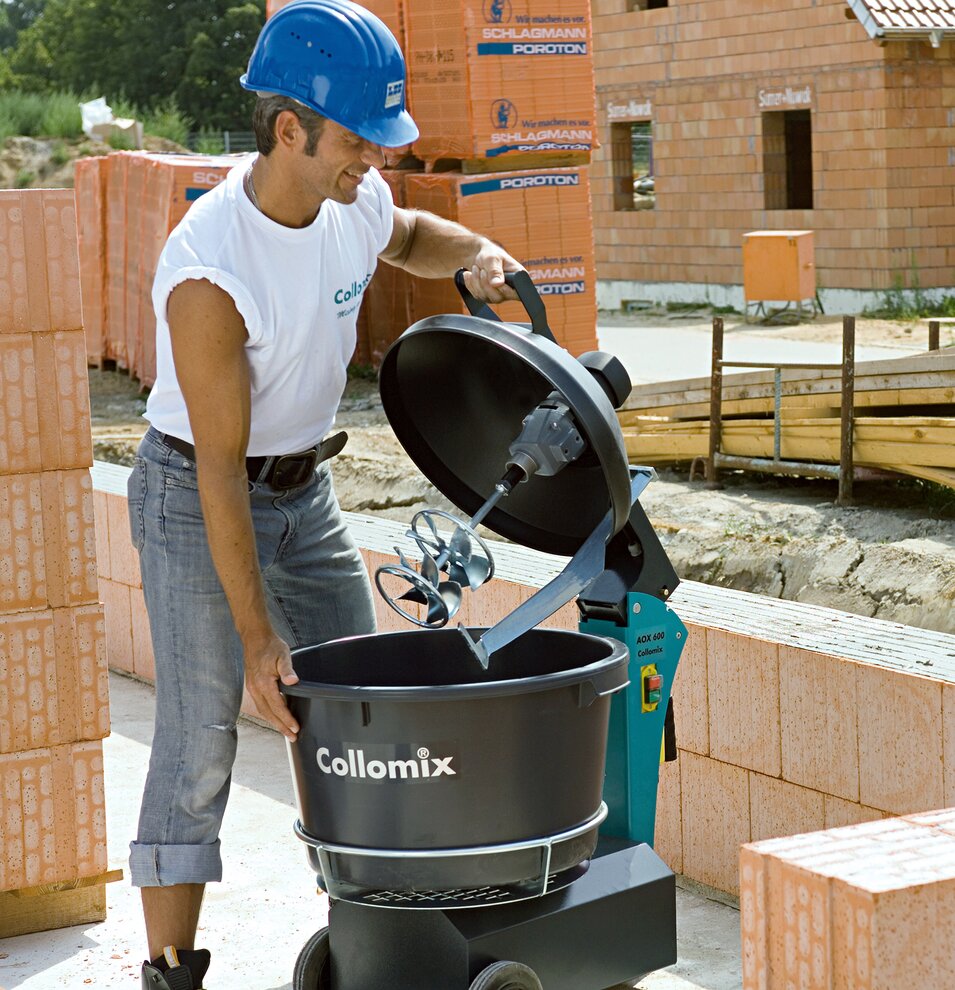
Zügiger Nachschub an Kleber mit Collomatic AOX
Unsere Werkzeugempfehlungen für das Dünnbettverfahren
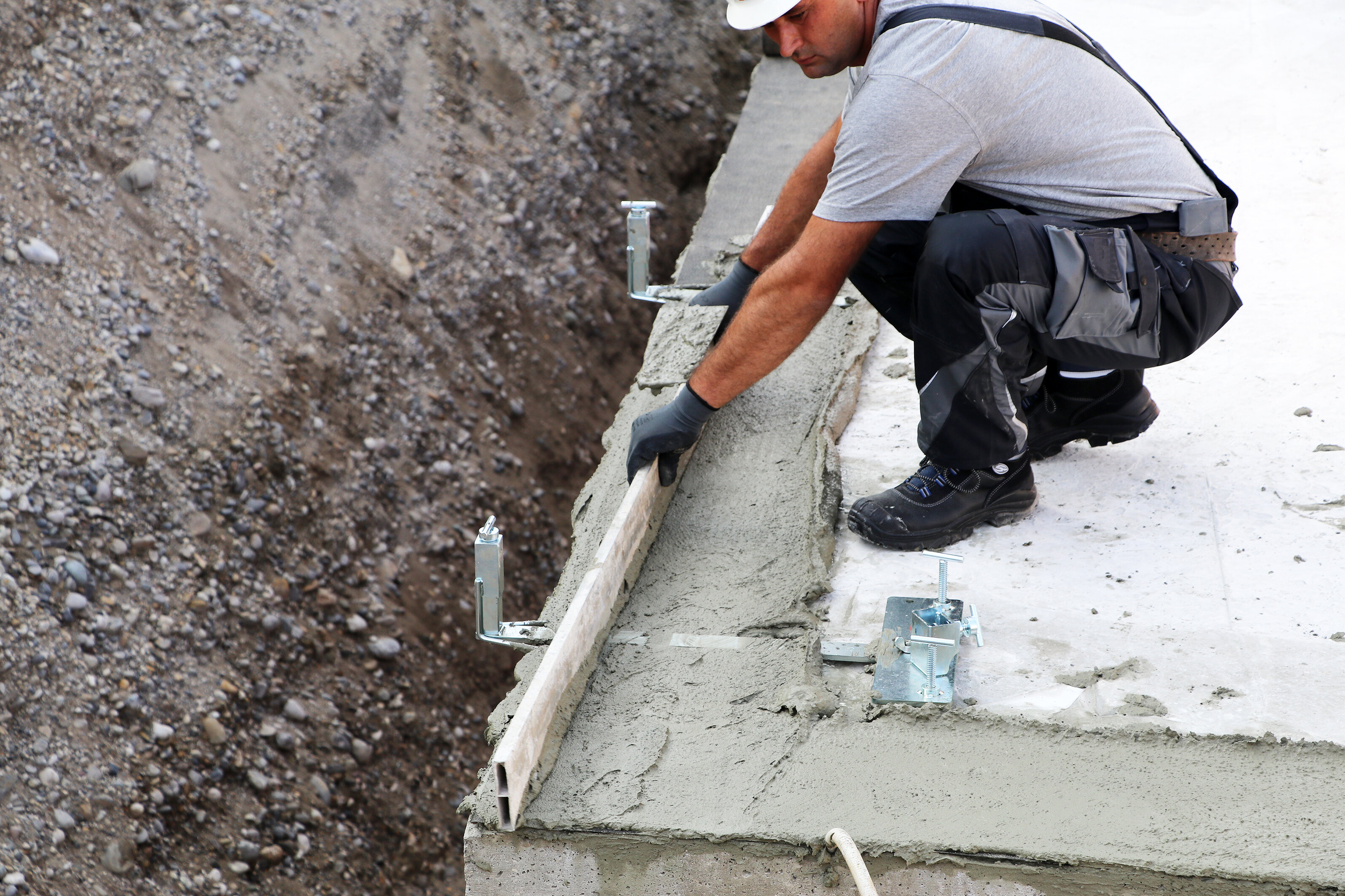
Collomix positioning aid
A high-quality contact layer is a prerequisite for the quality of a building and fulfills three central tasks that are essential for the building to be erected: the creation of straight walls through a level contact layer, insulation and protection against rising damp as well as a stable form fit with the base plate and the absorption of static forces. The Collomix laying aid ensures the creation of a level layer and therefore a clean first row of bricks. It ensures that the edge layer can be neatly leveled with the laying mortar. Two levelling gauges can be placed in the water using a laser or in the traditional way with a spirit level using adjusting screws. The mortar bed is then laid out with a laying or facing mortar and leveled using the two gauges. One of the gauges is then moved to the next section of wall, leveled out again and the next meters of mortar bed can be laid quickly. The Collomix laying aid saves valuable working time because not every brick has to be aligned again after setting.
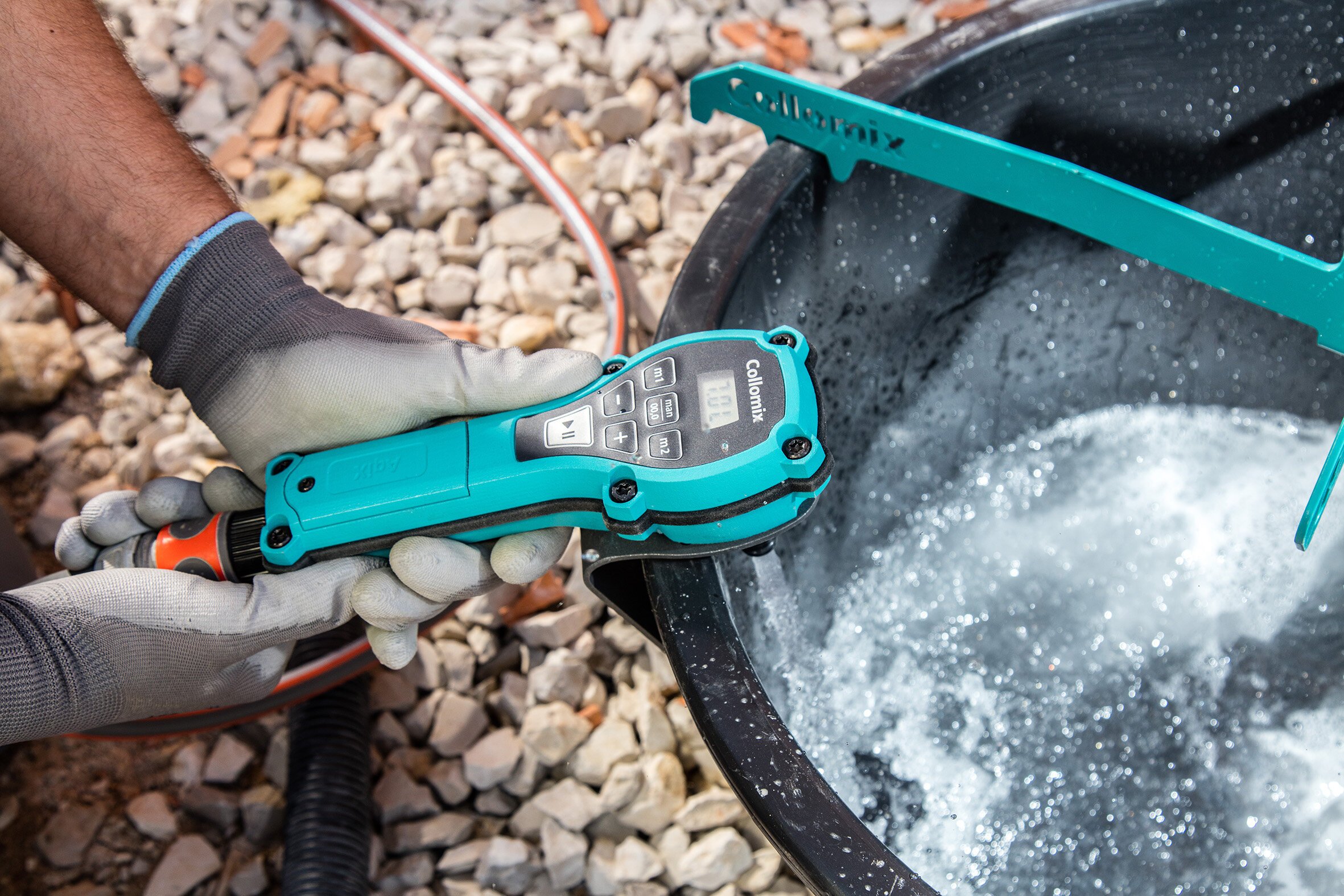
Water dosing instrument AQiX
Depending on the type of masonry - brick, sand-lime brick or aerated concrete - different thin-bed mortars or adhesives are used. These are supplied in bags and must be mixed on site. A decisive factor here is the exact amount of water to be measured out for the powder material. With the help of the AQiX water dosing device from Collomix, the required amount of water can be set to a tenth of a liter and added at the touch of a button. This prevents the mixture from being over- or under-watered and ensures constant flowability of the adhesive.
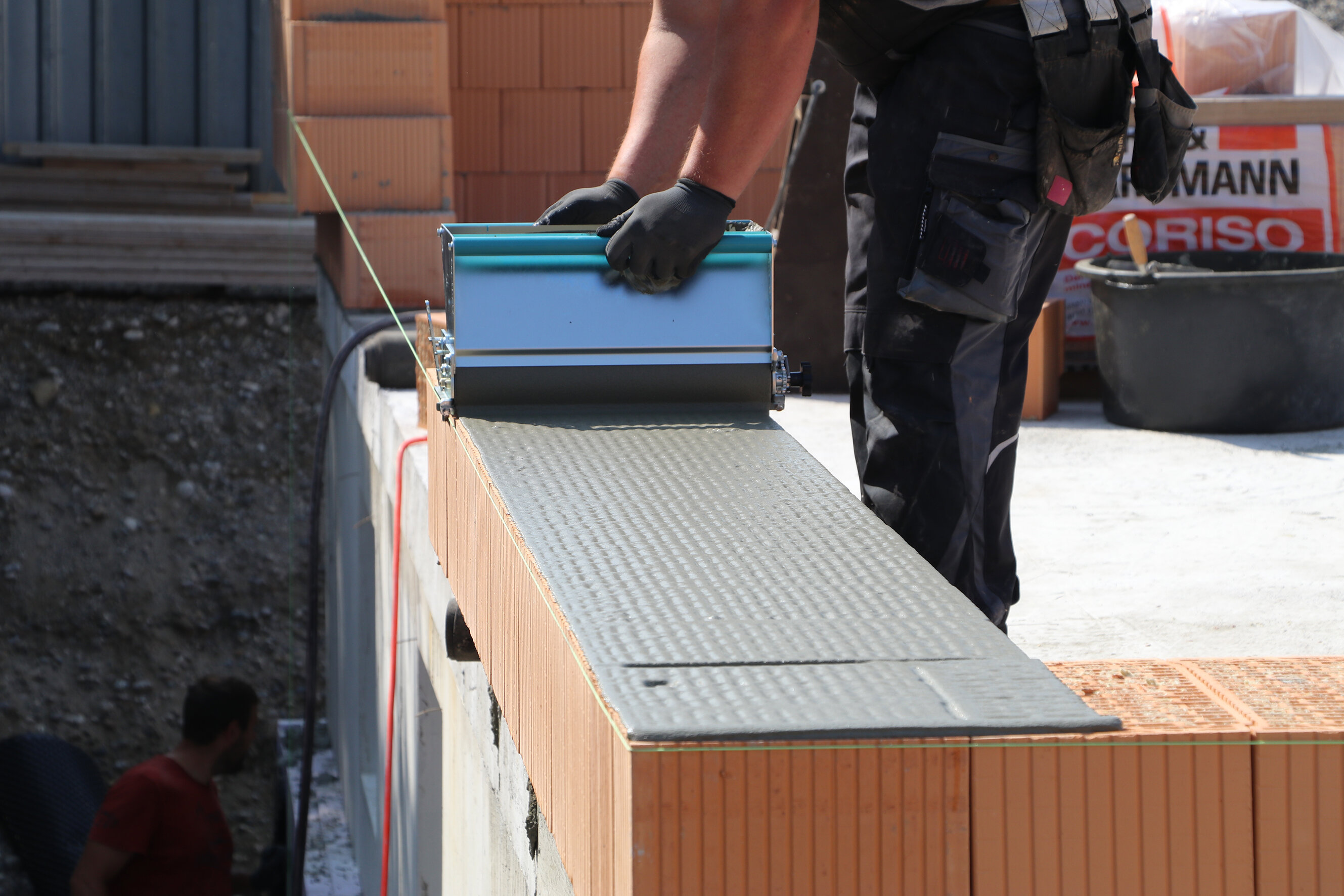
Mortar rollers for bricks, sand-lime bricks and aerated concrete
The mortar roller is used to apply the adhesive to the brick or stone row. The respective brick width must correspond to the width of the mortar roller. Once this has been set on the mortar roller and the mortar has been filled into the storage container, the mortar roller can be pulled quickly and flush over the entire length of the row of bricks like a sledge. This ensures the correct application height of the adhesive as well as the correct wetting of the brick surface. There are separate versions of mortar rollers for bricks, sand-lime bricks and aerated concrete in order to achieve the mortar patterns specified by the manufacturers. Whether it is a full-surface, capping application for filled flat bricks or an application in strips as with sand-lime bricks - a continuous, clean adhesive pattern with a constant application thickness ensures a load-bearing and closed masonry with a clean joint pattern. The use of Collomix mortar rollers speeds up wall construction considerably, which is clearly reflected in the costing. The Collomix mortar rollers are also characterized by the fact that at least two brick widths can be coated with each roller. With the sand-lime brick roller, as many as five different brick widths can be coated with one roller.
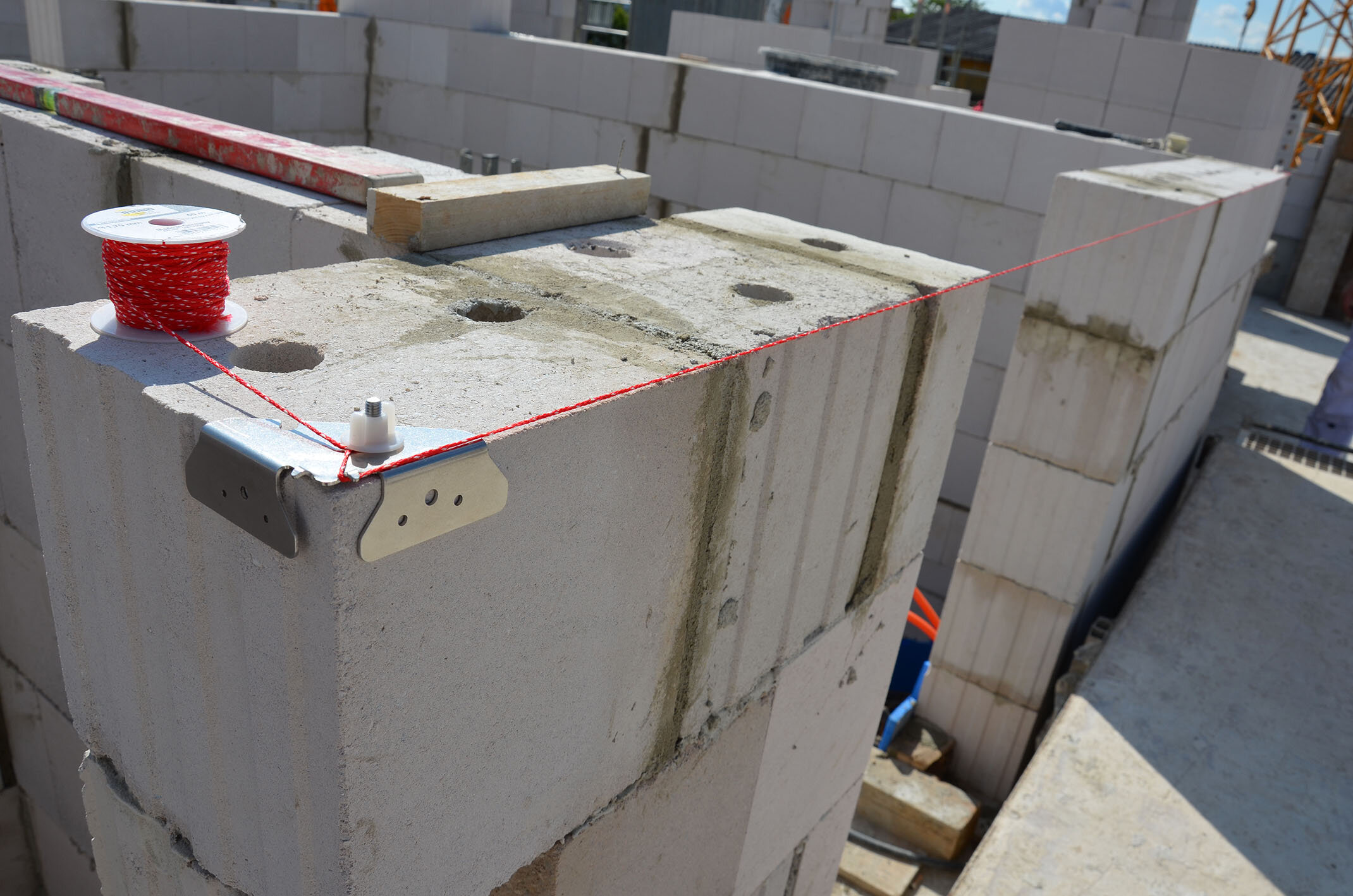
Nothing works on the construction site without a cord tensioner
Despite the laser - the good old string tensioner still has its place on the building site. Aligning the masonry horizontally and vertically is the be-all and end-all for good quality bricklaying work.
Unser Fazit
It is not only in masonry construction that "the right tool is half the work". The Collomix masonry range therefore provides masonry professionals with the most important tools for time-saving, high-quality work within the system. This ensures safety and efficiency on the construction site and also impresses customers with a high level of professionalism.
